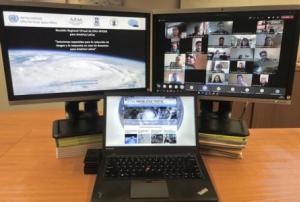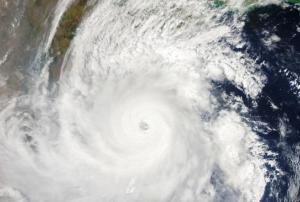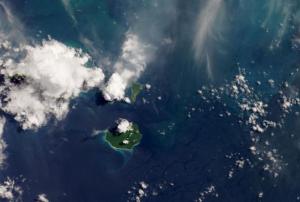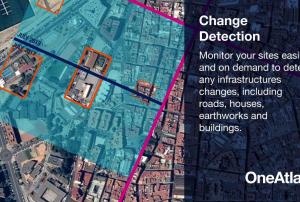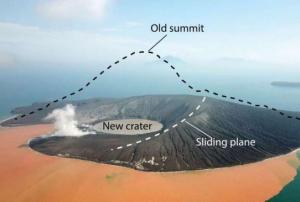Volcanic Eruption
Definition
Facts and figures
Further information
UN-SPIDER Regional Support Offices with hazard-specific expertise
Related content on the Knowledge Portal
En décadas recientes muchas comunidades en América Latina y el Caribe han experimentado desastres ocasionados por inundaciones, sequías, deslizamientos, terremotos, erupciones volcánicas y maremotos o tsunamis que han erosionado los logros asociados a procesos de desarrollo. Además, en este año 2020 la pandemia ocasionada por el virus COVID-19 ha impactado a muchos países del mundo, forzando a los gobiernos, al sector privado, a la sociedad civil y a organismos regionales e internacionales a modificar sus planes de trabajo. De manera paralela, varios países del Este de África, del Sudoeste de Asia y de América Latina están experimentando los impactos de la plaga de langosta.
Convencidos que las tecnologías espaciales pueden jugar un papel preponderante en apoyar los esfuerzos que llevan a cabo las instituciones en materia de gestión para la reducción de riesgos, la preparación, la respuesta y la recuperación en caso de desastres; la Asamblea General de las…
read moreRegional Support Offices mentioned:According to the latest issue of an annual disaster statistics report, floods were the deadliest type of disasters in 2019, followed by extreme temperature, while storms affected the highest number of people. Published by the Centre for Research on the Epidemiology of Disasters (CRED), “Natural disasters 2019 - Now is the time to not give up” draws on data recorded in the Emergency Events Database (EM-DAT), which saw the addition of 396 disasters that affected a total of 95 million and caused $103 billion in economic losses around the world.
Accounting for 40 per cent of disaster events, Asia suffered the highest impact with 45 per cent of deaths and 74 per cent of total affected. India, which saw cyclone Fani cause destruction in 2019, was the country most…
read more20/08/2020GeoEarth-2020 welcomes colleagues from all branches of Geosciences and from many countries in the world to participate to the second edition of thw 'World Congress on Geology and Earth Science'. The Conference will enable the sharing of best practices in Geoscience as well as exploring the role of remote sensing in monitoring Earth processes and dynamics.
The topics of the Conference include:
- Environmental Geology,
- GIS, Remote Sensing and Geospatial Sciences,
- Marine Geosciences and Oceanography,
- Groundwater and Hydrology: Surface Hydrology/Surface Water,
- Rock Deformation and Structural Geology,
- Volcanology and Plate Tectonics,
- Earth, Ecology and Ecosystems,
- Soil Science and Conservation of Soil Biodiversity.
- New studies use ground-based, satellite and AI technologies to improve volcanic eruption forecasting
Most of the volcanic activities are rapidly evolving phenomena, and thus, hard for volcanologists and disaster management agencies to monitor and predict. In the last four decades, however, due to the proliferation of new and innovative instruments and techniques, scientists have made progress in forecasting the timing of many volcanic eruptions. New studies have shown that combining ground-based information, satellite data, and AI technologies facilitates consistent and long-term monitoring of volcanoes, allowing researchers to have a comprehensive overview of volcanic systems. Understanding volcanic behavior can help to track unrest-warning signs, to forecast volcano eruptions and possible related landslides and tsunamis, and consequently to activate emergency plans in a timely manner.
Volcanologists are now using…
read more02/06/2020 - OneAtlas is a collaborative environment to easily access very high resolution imagery, perform large-scale image processing, extract industry specific insights and benefit from Airbus assets to develop solutions. The services include infrastructure change detection, vehicle detection & counting and will soon cover aircraft detection and land use change detection as well . Airbus provides the services through a buy-what-you-need option. It is possible to test the functionalities with a 30-days Free Trial.Publishing institution:
On 22 December 2018 a large chunk of the Anak Krakatau volcanic island collapsed into the ocean, causing a tsunami that swept across Indonesia’s Sunda Strait. Because tsunami early warning systems are exclusively equipped to detect tsunamis that are generated by earthquakes, this volcanic collapse-caused tsunami took place without a warning. In the coastal regions of Java and Sumatra, where people were struck off guard, the tsunami killed 400 people and injured many more.
A recent research study published in Nature Communications and led by the German Research Centre for Geosciences (GFZ) has detected deformations in Anak Krakatau leading up to the tsunami that could serve as an early warning system for future volcanic collapses. Satellite data plays a key role in developing such early warning systems by providing monitoring capabilities. As early as late June 2018, the Moderate Resolution Imaging…
read more13/11/2019NASA remote sensing and modeling resources are useful for managing a variety of disasters - including earthquakes, tsunamis, volcanoes, floods, landslides, wildfires, and oil spills - particularly in regions with very little in situ data. This webinar covers the fundamentals and techniques of monitoring Tsunamis, Earthquakes and Volcanoes, including pre-eruption monitoring, SAR-VIEWS, volcanic ash and remote sensing resources.
Learning Objectives:
… read more“More than half of the world’s active volcanoes are not monitored instrumentally,” according to GFZ Helmholtz Centre Potsdam. Yet eruptions occur quite frequently, with up to 85 of the 1500 active volcanoes erupting each year, and can cause significant damage. For example, the 2018 volcanic eruptions at Fuego (Guatemala) and Anak Krakatau (Indonesia) resulted in 430 dead and missing persons. This threat to human life makes improving the monitoring of volcanoes all the more important.
A German research team, made up of scientists from the Technical University of Berlin and the GFZ German Research Centre for Geosciences in…
read more06/08/2019- Based on MODIS data, MIROVA detects near real time volcanic hot spots. In order to do so MIROVA analyses the MiddleInfraRed Radiation (MIR) measured over large volcanoes to detect, locate and measure the heat radiation from volcanic activity. This automated thermal monitoring of the most active volcanoes on Earth in near real time provides the user with a quick overview of the latest thermal images which are available for Google Earth overlapping. Additionally, MIROVA provides an updated Volcanic Radiative Power (VRP) time-series in logarithmic and normal scale. MIROVA has been developed as a collaboration between the University of Turin and the University of Florence.Publishing institution:

